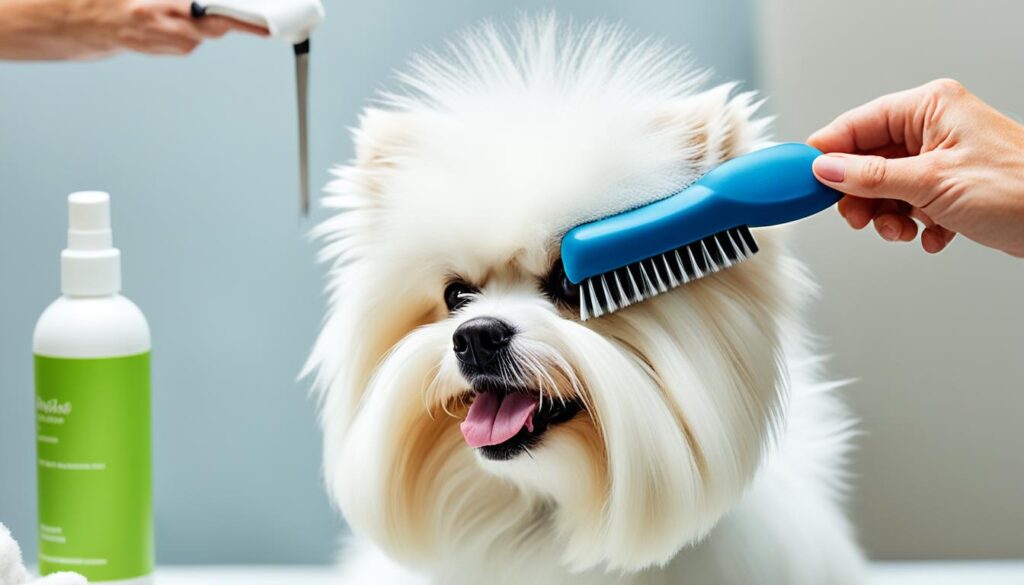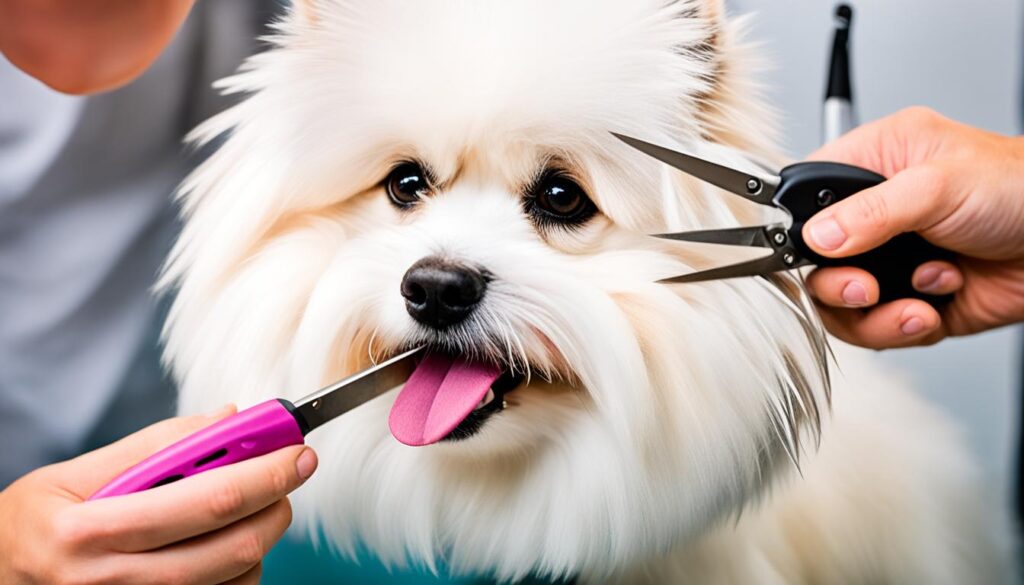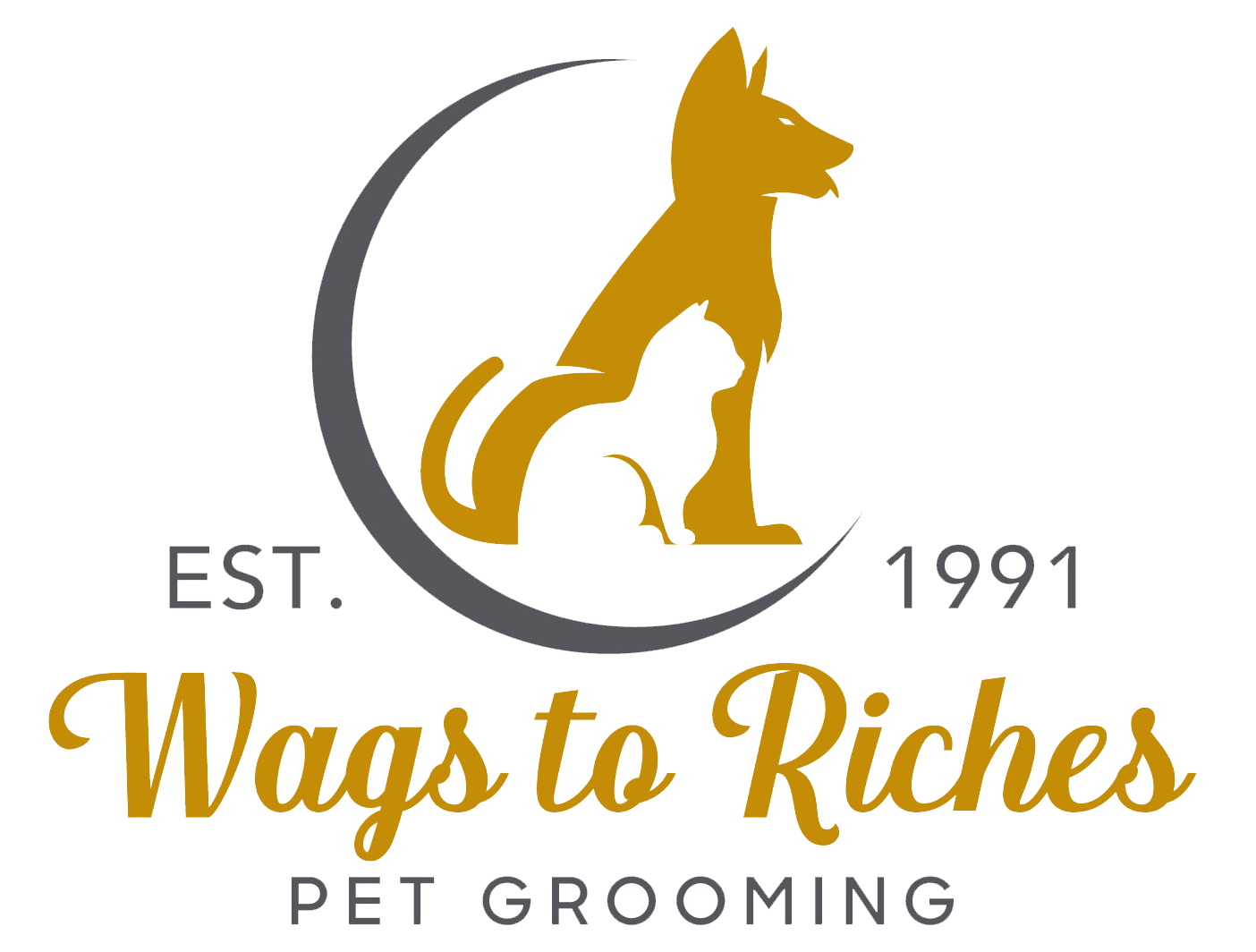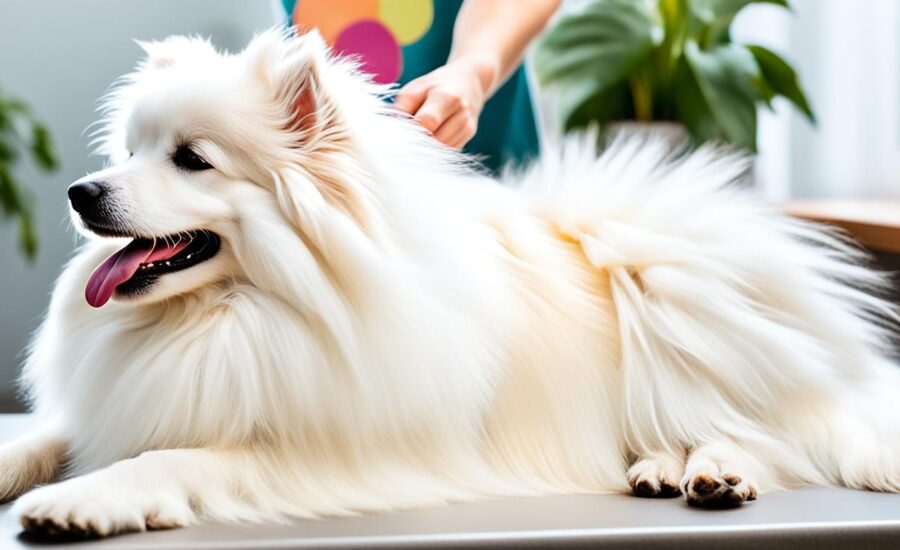Remember watching a dog’s tail wag in joy or a cat’s tail sweep elegantly? These tails, full of beauty, play a vital role in a pet’s health. But are you sure you’re keeping it in top shape? Or is your pet’s tail becoming a mess without you knowing? We’re here to solve the grooming your pet’s tail puzzle. Let’s dive into the world of pet grooming tips to keep those happy pet tails wagging.
Key Takeaways
- Understanding the significance of regular tail grooming for your pet’s health and comfort.
- Learning sensitive methods to handle tangles and mats without causing distress.
- Discovering the proper trimming techniques for different types of tails.
- Highlighting the importance of maintaining cleanliness in the delicate area around your pet’s anus.
- Appreciating the aesthetic and health benefits of managing a well-groomed tail on your furry friend.
Understanding the Basics of Tail Grooming for Pets
Grooming your pet at home is more than just a bath and brushing. It means paying attention to every part, including your pet’s tail. Knowing the pet grooming essentials will help your furry friend stay clean, comfortable, and well-cared for.
Identifying Your Pet’s Tail Type
Pets have different tail types, like pom-pom or plume, and knowing this is key. Each type needs a special grooming approach for both looks and health. Pet tail care begins with recognizing these types and using the right method.
The Importance of Regular Grooming Sessions
Regular grooming avoids mats and tangles, crucial for pets with thick or long tail fur. These sessions should be part of your pet’s routine to keep their tail mat-free and clean. Also, grooming at home keeps your pet looking great and promotes their overall health.
Selecting the Right Tools for Tail Grooming
Using the right tools is essential for tail grooming. Your kit should have a slicker brush, scissors, and a de-matting comb for knots. The proper tools, suited to your pet’s fur type and needs, ensure comfort for them and effectiveness for you.
Home grooming is about more than looks; it’s about your pet’s comfort and health. With the correct knowledge and tools, you can provide the care they deserve. Knowing about different tail types and grooming methods is key to happy, healthy pet tails.
Step-by-Step Grooming for Your Pet’s Tail
Learning how to groom your pet, especially their tail, can make them more comfortable and healthy. Their tail is often seen as a special part of them, so it’s important to keep it well-maintained. This guide will give you tips on grooming your pet’s tail easily and without stress.

Step-by-Step Guide to a Healthy Tail Grooming Routine
Start by gently brushing out any knots. This works for all types of tails, from fluffy to sleek. Be careful around the tailbone area to avoid hurting them. A good brush-through is the first step for a great grooming session.
Dealing with Tangles and Mats
If you find tangles or mats, don’t worry. Handle them calmly with the right tools. A de-matting comb is perfect because it’s gentle and efficient. Remember to hold the base of their fur while combing to ease any discomfort.
Trimming Techniques for a Fluffy Tail Appearance
Trimming is sometimes necessary to keep your pet looking sharp. It’s important whether you’re trimming for cleanliness or style. The aim is to achieve a tidy and balanced trim that looks good but is also safe. Don’t trim too close to the skin or tailbone.
- Brush carefully to avoid the tailbone.
- Use a de-matting comb for mats, holding the base of the fur.
- Trim the fur for a neat appearance, ensuring the tail length matches the body size of your pet for a proportionate look.
| Grooming Step | Tools Required | Technique |
|---|---|---|
| Detangling | Brush, De-matting Comb | Brush in sections, use de-matting comb on tangled areas. |
| Trimming | Scissors | Carefully shape the tail fur to maintain a natural tail flow. |
Advanced Pet Tail Grooming Techniques
Grooming your pet at home needs careful attention, especially their tail. You must mix traditional and advanced methods to get it right. This ensures your pet looks great and feels comfortable.

Using Thinning Shears for a Natural Look
For a tail that looks naturally groomed, thinning shears are key. They thin the fur subtly, maintaining the tail’s natural shape. This avoids the choppy look that regular shears might cause.
Tricks for a Safe and Painless Grooming Experience
Creating a peaceful setting is crucial for pet grooming. Calm talking and treats help keep your pet relaxed. Always handle their tail gently and use the proper brush to avoid hurting them.
Tail Grooming Styles for Different Breeds
Different breeds need different tail styles. For instance, a poodle might have a pompom tail, while a husky needs less trimming. Knowing these styles helps tailor the grooming to each pet’s needs and appearance.
Ensuring Your Pet’s Comfort During Grooming
Every pet owner loves seeing happy pet tails at home. Stress-free grooming is key to that happiness. How we handle our pets during pet tail care matters just as much as the tools we use. Keeping your pet comfortable during grooming keeps them safe and builds trust.
Avoiding Tailbone and Skin Injuries
To prevent injuries, handle the tail area carefully. Use the right pet grooming essentials and know your pet’s tail anatomy. The tailbone is especially sensitive and needs gentle support. Here’s a table of grooming tools and their benefits:
| Tool | Use | Benefit |
|---|---|---|
| Slicker Brush | Detangling Fur | Prevents pulling on the tailbone |
| De-matting Comb | Removing Knots | Minimizes risk of cuts and skin irritation |
| Scissors | Trimming Excess Fur | Allows for precise cuts avoiding the skin |
Creating a Calm Grooming Environment
Reducing anxiety is essential during grooming. A quiet space lets happy pet tails shine, as calm pets are easier to groom. Using soft voices and gentle touches helps ease fear. Valuing pet tail care leads to a nurturing space that pets love.
Keeping your pet comfortable during grooming avoids injuries and creates peace. With patience and the right tools, grooming time becomes a joyful experience. This captures the true spirit of happy pet tails.
Maintaining Tail Hygiene Between Grooming Sessions
Keeping your pet’s tail clean is crucial for their happiness and health. Grooming at home after a fun day outside or for regular care is rewarding. It makes the bond with your pet stronger. Here are some easy tips to keep the tail clean with good grooming tools and practices.
Cleaning Practices for a Healthy Tail
Regular cleaning is key to keeping your pet’s tail hygienic. Use pet-safe wipes or sprays to clean and freshen up the tail area. This removes dirt and keeps infection risks low. Doing this readies the tail for a good grooming session at home.
Tools for Maintaining Mat-Free Tail between Grooming
Using the right tools can help avoid mats and tangles in your pet’s tail. Slicker brushes and combs are great for daily care to keep fur smooth. For tough knots, a de-matting comb is essential. It gently untangles fur. With these tools, keeping your pet’s tail groomed becomes simple and pleasant.
Conclusion
Starting to groom your pet’s tail can bring joy to both of you. It’s important to know that different tails need different care. This knowledge helps create a grooming routine that makes for happy pet tails. It leads to good looks and top health. By following tailored pet grooming tips and using the right methods, you can keep your pet’s tail looking great.
Tail grooming is more than making your pet look nice; it shows you care deeply. Keeping up with grooming at home stops issues like matting and keeps your pet comfortable. It also makes your bond with your pet stronger. This kind of frequent care keeps your pet happy and their tail in perfect shape.
Being consistent and attentive to their unique needs is central to grooming your pet’s tail properly. As discussed, good tail grooming is vital for your pet’s happiness and cleanliness. It allows pet owners to play a big part in their pet’s well-being. This effort builds a loving relationship based on mutual care, respect, and understanding.
FAQ
How can I identify my pet’s tail type for proper grooming?
Why is regular grooming important for my pet’s tail?
What tools should I use for tail grooming?
Can you provide a step-by-step guide to grooming my pet’s tail?
How do I deal with tangles and mats in my pet’s tail?
What are some trimming techniques for a fluffy tail appearance?
How can I use thinning shears to give my pet’s tail a natural look?
Are there any tricks for a safe and painless grooming experience?
What are some tail grooming styles for different breeds?
How do I avoid tailbone and skin injuries during grooming?
How can I create a calm grooming environment for my pet?
What cleaning practices can I use for a healthy pet tail?
What tools should I maintain for a mat-free tail between grooming sessions?
Source Links
- http://petgroomingthegoodthebadthefurry.blogspot.com/2014/05/tails-tails-and-more-tails.html
- https://wagwalking.com/grooming/trim-a-dogs-tail
- https://www.healthyhappypaws.com.au/dog-grooming/how-to-trim-your-dogs-tail-at-home

